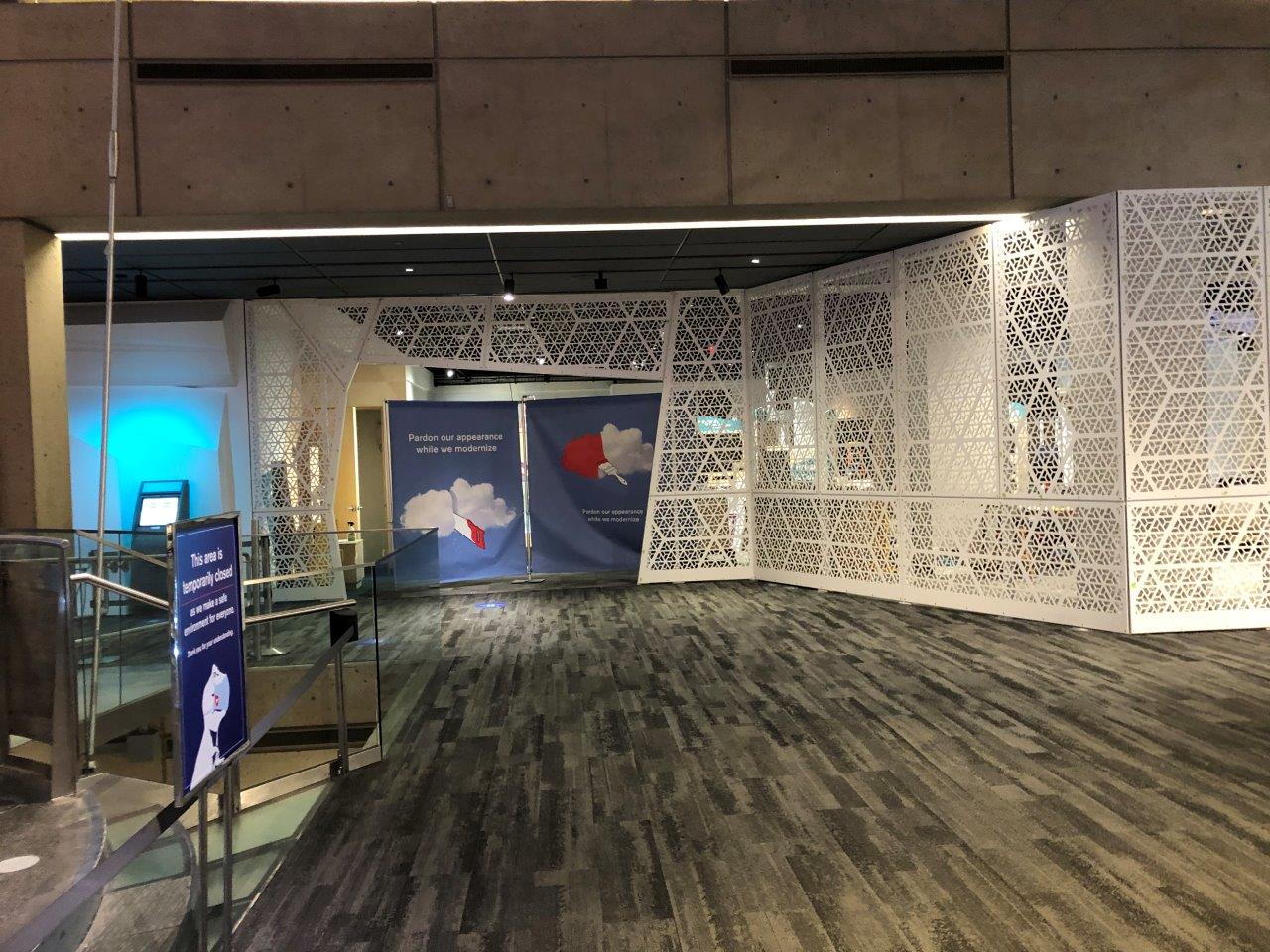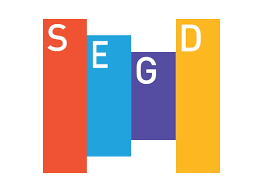Structural Signage for an Arctic Adventure
Branding, Customer Spotlight, Design/Build, New England Signs, Partners-Developers-ContractorsSignage plays a pretty important role in Museums. Bright bold colors, interesting graphics, and eye-catching fonts help command visitor attention.
But museums offer additional challenges with architectural signage, which must align with their high aesthetics and design standards. Strong, effective signs should reinforce the buildings’ styles and standards, too, while also conveying easily-read messages.
Since cultural attractions like museums, science centers, and aquariums exist to entertain and inform, every part of their planning—including signage—factors in how they can enhance visitor experiences.
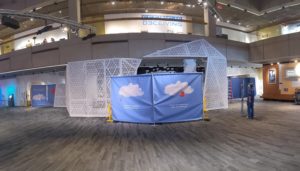 Details Make the Design
Details Make the Design
While function remains the first goal of creating museum signage, exceptional designers think about the “fun” in function, too.
Signage that reflects an exhibit’s theme brings the museum brand personality to life. Whether it’s a new display that changes periodically or a new addition to the museum’s permanent collection, how better to engage visitors and invite them to explore what’s within than with unique signage out front?
Project Managing an Artistic Signage Installation
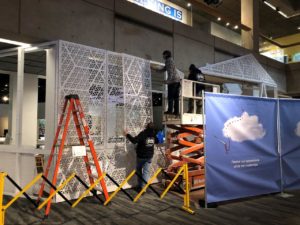 When a museum plans a new exhibit, that planning involves a whole lot of people — and a project manager or two! Usually, we think of signage companies as the go-to designers, creators, manufacturers, and installers of signs. But sometimes, as was the case with Boston’s Museum of Science — they use their experience to step into a project management role.
When a museum plans a new exhibit, that planning involves a whole lot of people — and a project manager or two! Usually, we think of signage companies as the go-to designers, creators, manufacturers, and installers of signs. But sometimes, as was the case with Boston’s Museum of Science — they use their experience to step into a project management role.
Metro’s built a reputation on designing, fabricating, and installing cutting-edge, innovative signage for a range of clients that include multipurpose use buildings to malls and restaurants to universities and, yes, museums, too.
But that’s not all we do. As a design-build company, we also work as signage project managers. And it’s a lot of fun when we get to work on architectural signage projects like the recent design and installation at the Museum of Science.
We loved the scope of this project, which felt more like we were creating art than signage. We offered our 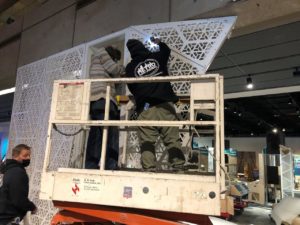 expertise as part of a team creating the structural elements at the entrance of a new hands-on exhibit, Arctic Adventure: Exploring with Technology. The visitor experience begins with the unique “sign” that Metro worked with the general contractor, R.W. Hyde Construction, to install. The sign draws its inspiration from the exhibit itself.
expertise as part of a team creating the structural elements at the entrance of a new hands-on exhibit, Arctic Adventure: Exploring with Technology. The visitor experience begins with the unique “sign” that Metro worked with the general contractor, R.W. Hyde Construction, to install. The sign draws its inspiration from the exhibit itself.
The experience begins with a giant white wall that stretches above and to either side of the entrance. A series of interconnected panels evoke glaciers and icebergs. The white panels create a see-through wall with cutouts similar to the crystalline design of snowflakes, and it looks almost lattice-like, with each panel flowing to the next.
To Create a Work of Art is to Create the World
Abstract artist Wassily Kandinsky would approve of the Museum’s new exhibit entrance, but its creation and installation was not without challenges. Just as arctic explorers and researchers must overcome conditions unique to the world’s coldest and most unforgiving environments, the sign team faced some unusual quirks with this custom, one-of-a-kind installation.
The frame, built off-site, had to be transported and reinstalled onsite in a very wide, expansive space without a level ceiling or floor. To ensure all parts aligned to create the flow, the entire team—Metro, museum personnel, Mill City Iron, the architects, and general contractor—had to collaborate on trouble-shooting issues that arose.
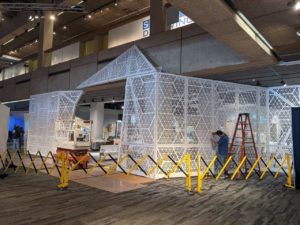 We needed to tweak the steel frame to account for non-level areas and make sure the frame holes aligned with the panel holes. Because the shapes had to line up exactly from one panel to the next, we had very small tolerances for the shape to work. Normally, when you drill a hole for something, you can drill in an oval shape to allow for slight adjustments. We weren’t able to drill the larger-sized holes—but we found a workaround!
We needed to tweak the steel frame to account for non-level areas and make sure the frame holes aligned with the panel holes. Because the shapes had to line up exactly from one panel to the next, we had very small tolerances for the shape to work. Normally, when you drill a hole for something, you can drill in an oval shape to allow for slight adjustments. We weren’t able to drill the larger-sized holes—but we found a workaround!
The walls needed a child-safe security bolt; so we found bolts with a slightly larger head than normal to fasten the panels to the frames. Those heads allowed us to drill the holes a little wider which gave us the play we needed to make slight adjustments during the installation.
We also built templates to guide the construction and installation process. We sent these panels—made from MDF boards—to Mill City who used them to guide their manufacture of the steel frame. Our team used the templates again to help guide the assembly at the museum—and when we found a potential problem, we could adjust on the templates before tweaking the design or hole shapes.
Teamwork Leads to Success
Many people contributed to the success of this complex design-build. The museum’s senior exhibit designer, Doreen Juncewicz worked with Metro’s designer on the initial concept. Mill City Iron manufactured the steel frame on which the panels were installed. EcoSupply built the panels out of a composite material. Chris Heestelikn, project manager for RW Hyde, architecture firm William Rawn Associates, and Keith Marceau, the site superintendent, all worked closely with our Metro team, led by senior project manager Barry Gluck. We helped coordinate tweaks to the design and the panels’ construction, and our team installed the panels.
While visitors likely won’t think too much about the five different elevated sections that comprise the installation, it’s the perfect complement to beckon museumgoers to immerse themselves in the world of the arctic.
